Trump’s tariffs have rocked the US and global economies, and it’s still unclear if there’s anything to be gained from them. Tariffs are affecting the world economy and will likely continue to do so until the US strikes new deals with China and other markets hit by the tariffs.
The immediate result is higher prices for US consumers, whether it’s goods sold on Amazon, imports from Temu and Shein, or accessories for the upcoming Nintendo Switch 2. The Xbox is also getting more expensive, and Sony has announced PS5 price hikes in certain international markets.
I already expressed concern that the iPhone 17 series could see price increases, including the iPhone 17 Air. I said I might rethink my purchase plans if that happens.
Apple addressed tariffs during its earnings report for the March quarter. We learned that Apple expects to pay around $900 million in tariffs during the June quarter, a significant amount. While the company reported $95 billion in revenue for the March 2025 quarter, nearly $1 billion in extra taxes comes directly out of profits, which is clearly not ideal for Apple.
Apple also assured investors and consumers that the iPhones imported into the US will come from India instead of China, implying prices shouldn’t change immediately.
Still, considering recent developments and the ongoing uncertainty around tariffs, I’m left wondering if Apple will raise iPhone prices to offset lost profits. I asked ChatGPT o3, one of OpenAI’s top models, to estimate how much Apple would need to raise iPhone prices to recover that $900 million in quarterly tariff costs.
iPhones and other Apple products currently aren’t subject to tariffs, according to CEO Tim Cook during the earnings call:
Also, for transparency and clarity, the vast majority of our products including iPhone, Mac, iPad, Apple Watch, and Vision Pro are currently not subject to the global reciprocal tariffs that were announced in April, as the Commerce Department has initiated a Section 232 investigation into imports of semiconductors, semiconductor manufacturing equipment, and downstream products that contain semiconductors.
So, the $900 million Apple referenced applies to other products. Cook also said this estimate assumes “the current global tariff rates, policies, and applications don’t change for the balance of the quarter.”
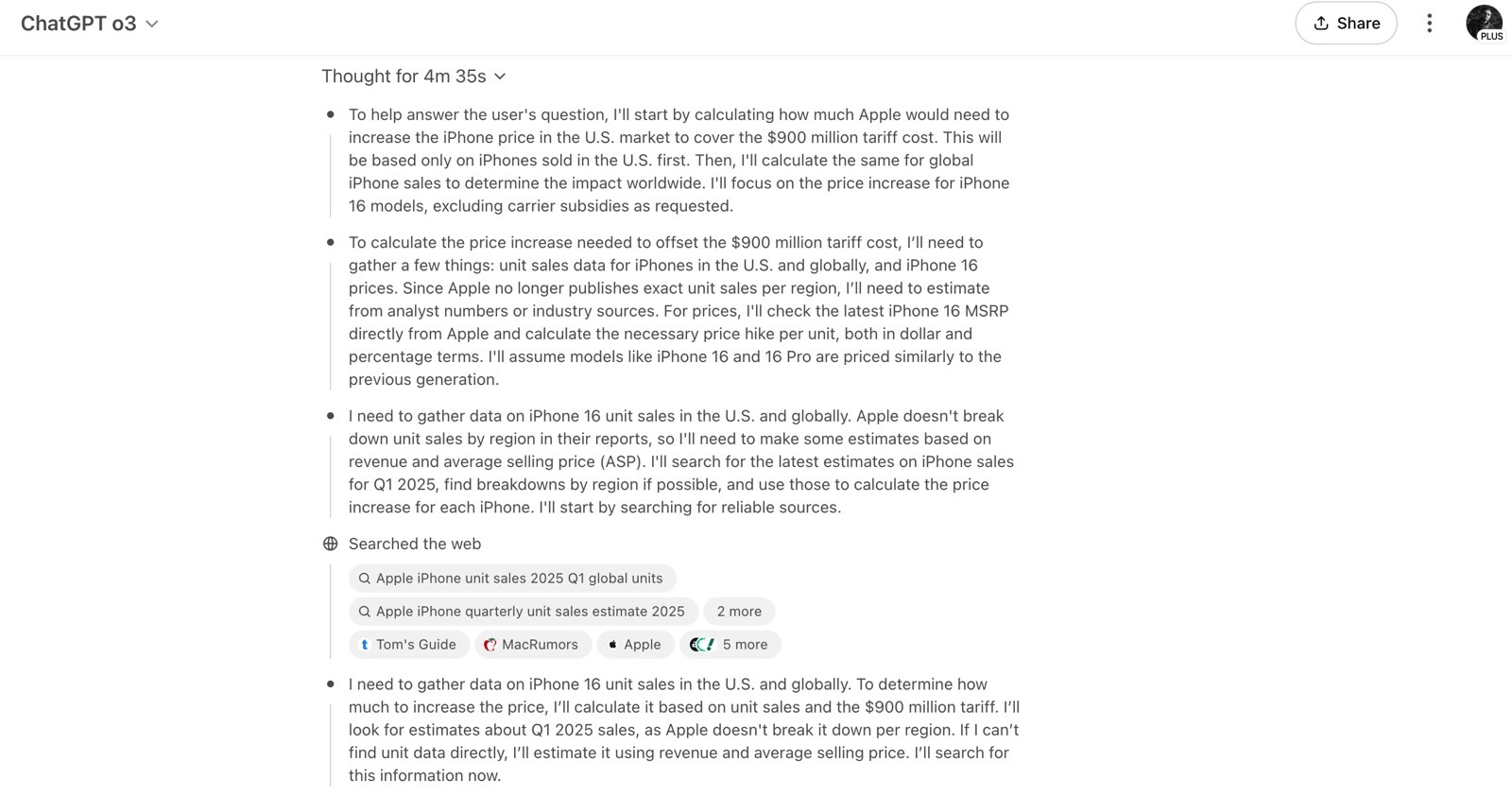
So why even consider a price hike for the iPhone? For starters, the iPhone accounts for nearly half of Apple’s revenue. It’s Apple’s best-selling product and the one many smartphone buyers want most. Plus, most consumers go for the pricier Pro and Pro Max models. Some may not mind paying a bit more.
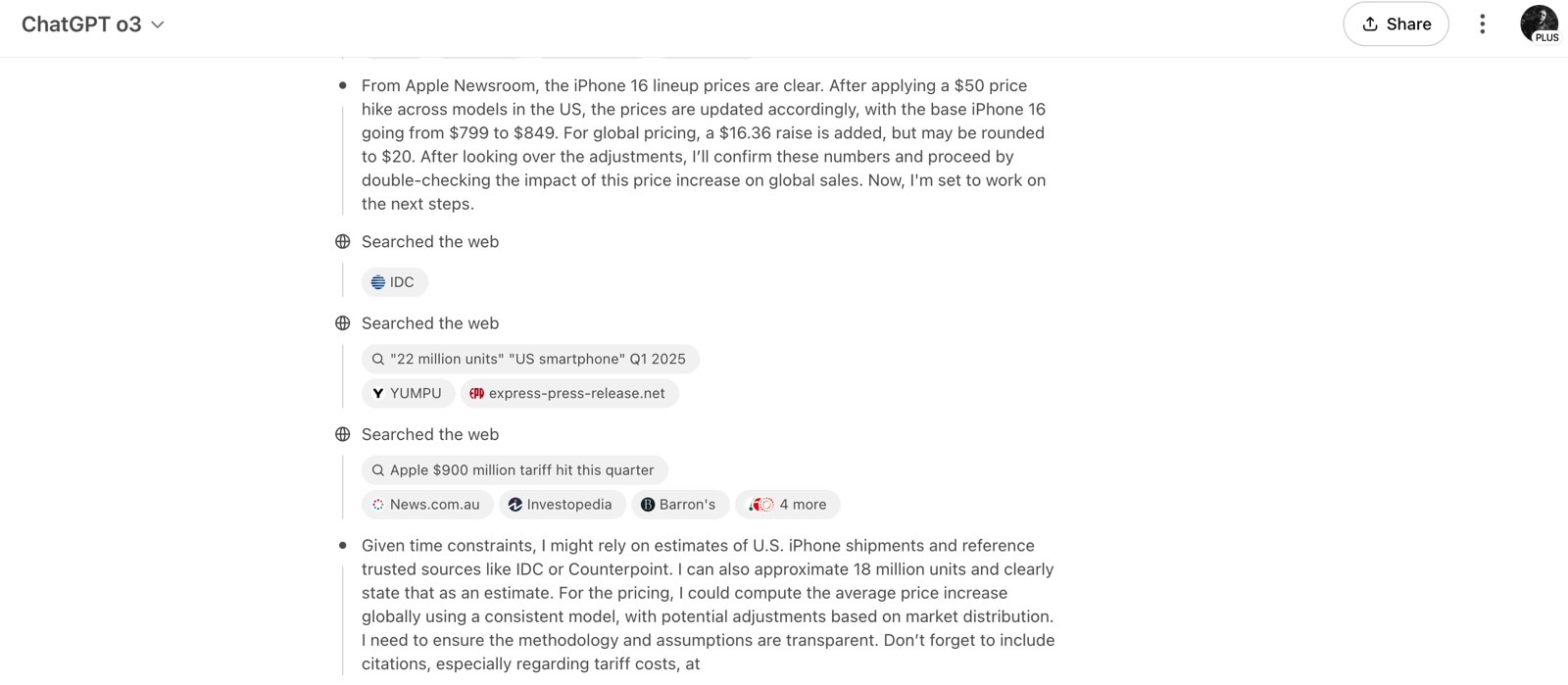
I also wanted to see how ChatGPT o3 would tackle the question, and how it would reason through it (see screenshots above).
The AI needed to estimate how many iPhones Apple sells each quarter and how many are sold in the US. Then, it had to figure out how much to raise the price to make up for the $900 million loss.
I gave the model two scenarios. First, I asked what a US-only price hike would look like. Many companies pass all or part of the tariff costs on to consumers, and Apple could do the same.
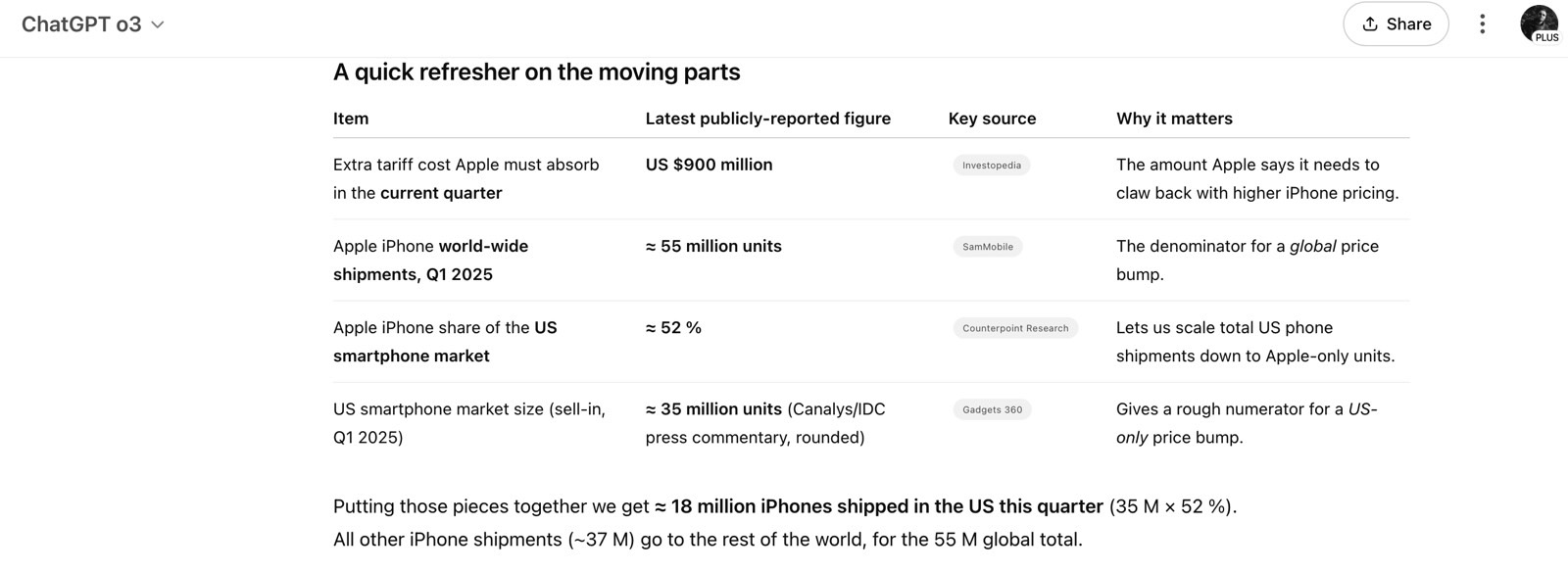
Then I asked what would happen if Apple raised iPhone prices globally to recover the $900 million. That scenario would spread the cost more widely, resulting in a smaller increase per unit.
ChatGPT o3 got to work, spending over four minutes gathering data. It estimated that Apple sells about 55 million iPhones per quarter, with roughly 18 million going to US buyers. From there, it calculated how much Apple would need to raise prices.
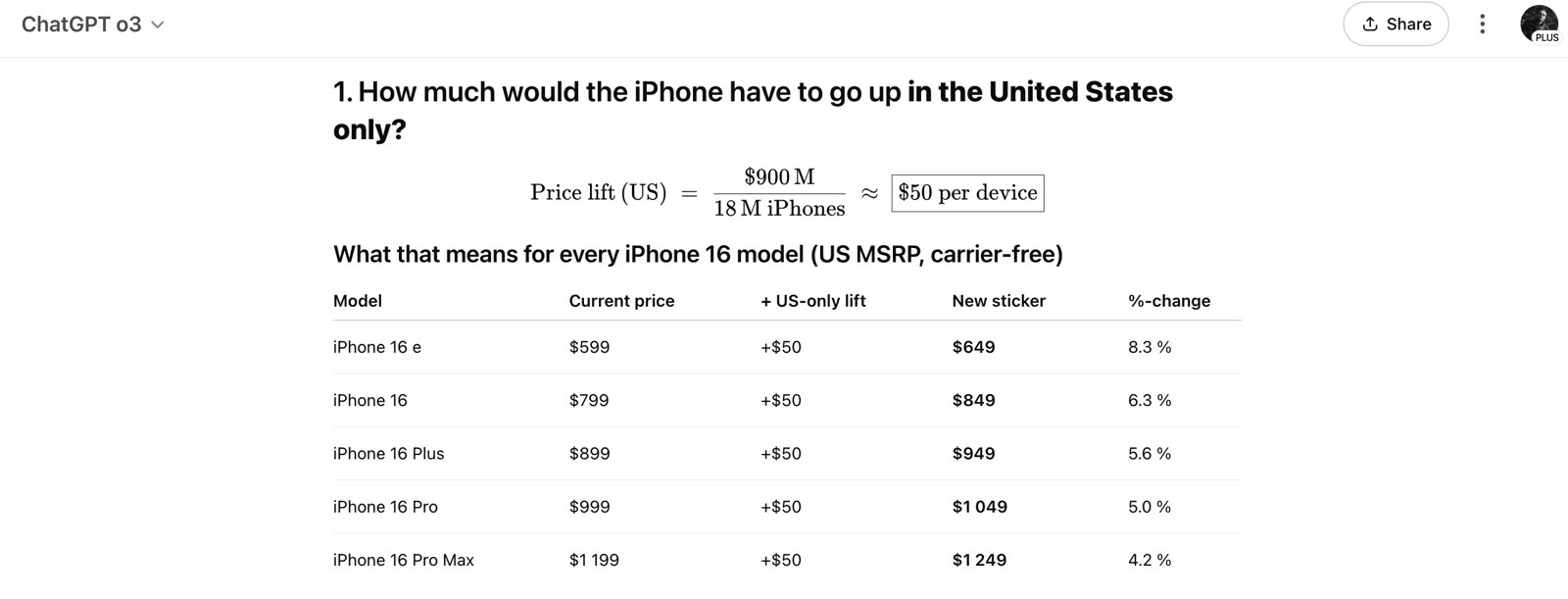
ChatGPT came up with a $50 price hike for all iPhone models. I told it to use the iPhone 16 series for reference, since those are the current models of interest. Of course, Apple’s quarterly iPhone sales also include older devices, which would likely see the same price increase.
In that case, the $599 iPhone 16e would jump to $649.
If Apple spread the $900 million cost across all 55 million iPhones it sells worldwide, the price increase would drop to $16.36 per unit.
That would make the $599 iPhone 16e cost $615.36.
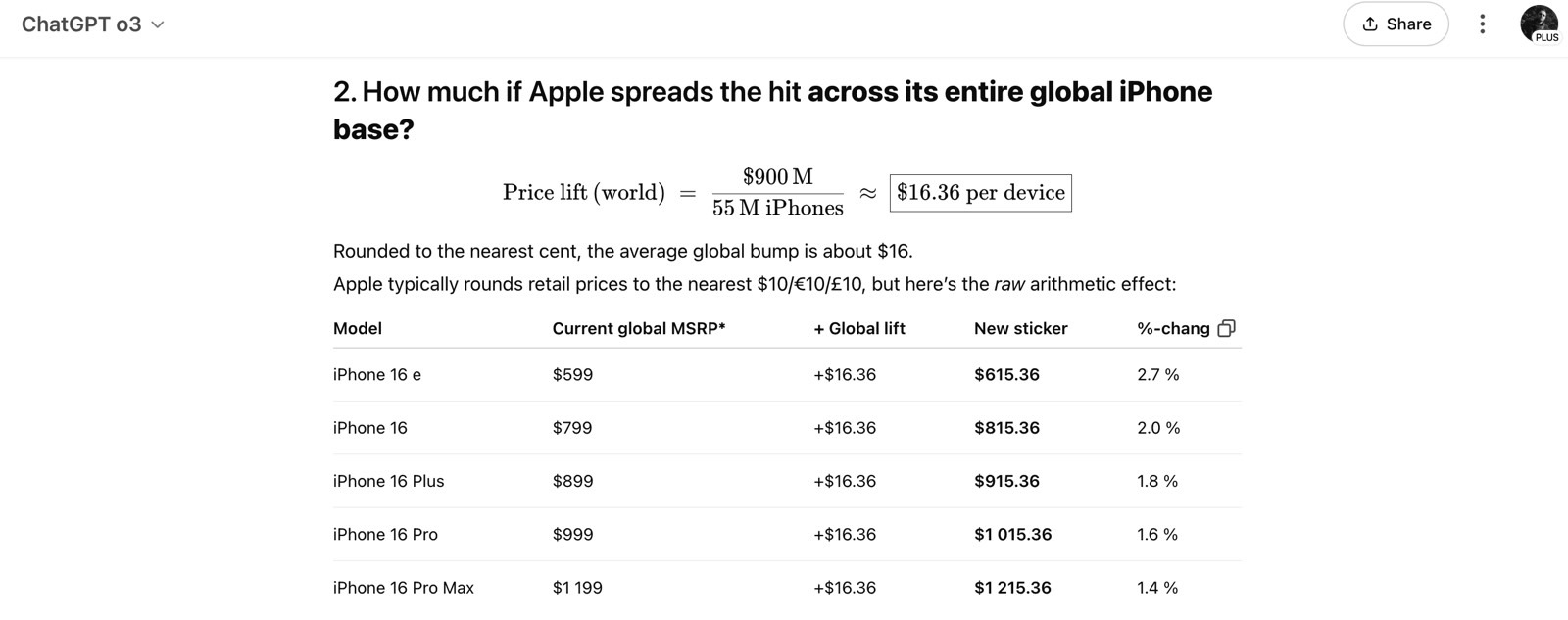
I realize my question doesn’t cover every variable. iPhone sales fluctuate from quarter to quarter, and exchange rates also influence prices in some regions. As for the $900 million figure, it could change. This latest phase of the US-China trade war is still evolving.
Apple could also spread the cost across all its products, not just the iPhone. That would reduce the iPhone-specific increase.
Finally, if Apple plans to raise prices, it might wait until new products launch. It makes more sense to introduce higher prices with the iPhone 17 than to increase iPhone 16 prices now.
For now, the good news is that the iPhone 17 lineup isn’t expected to see a price hike. Apple appears willing to absorb that $900 million tariff bill rather than pass it along to consumers. We’ll have a clearer picture as we approach the iPhone 17’s expected launch in mid-September.








